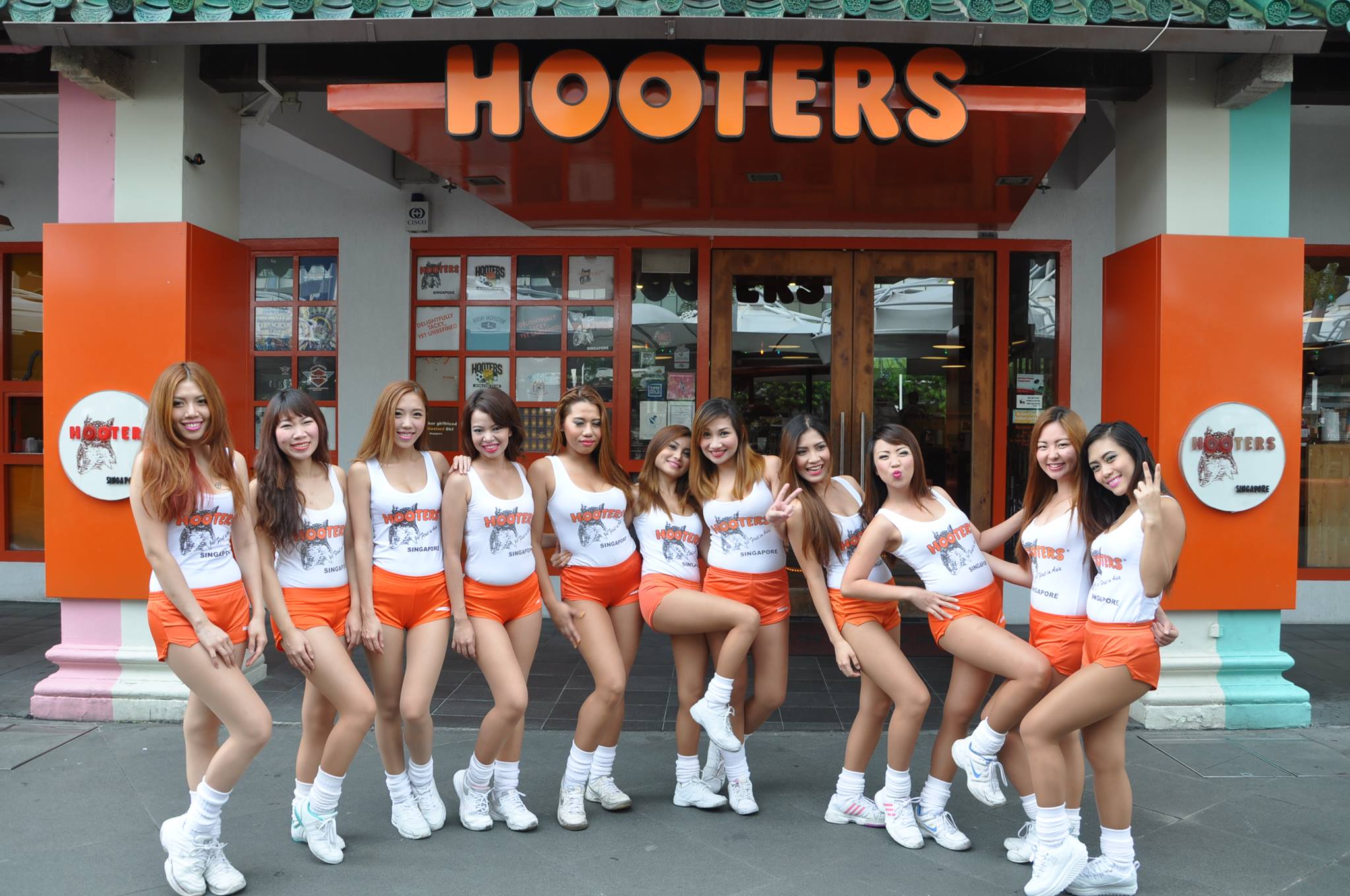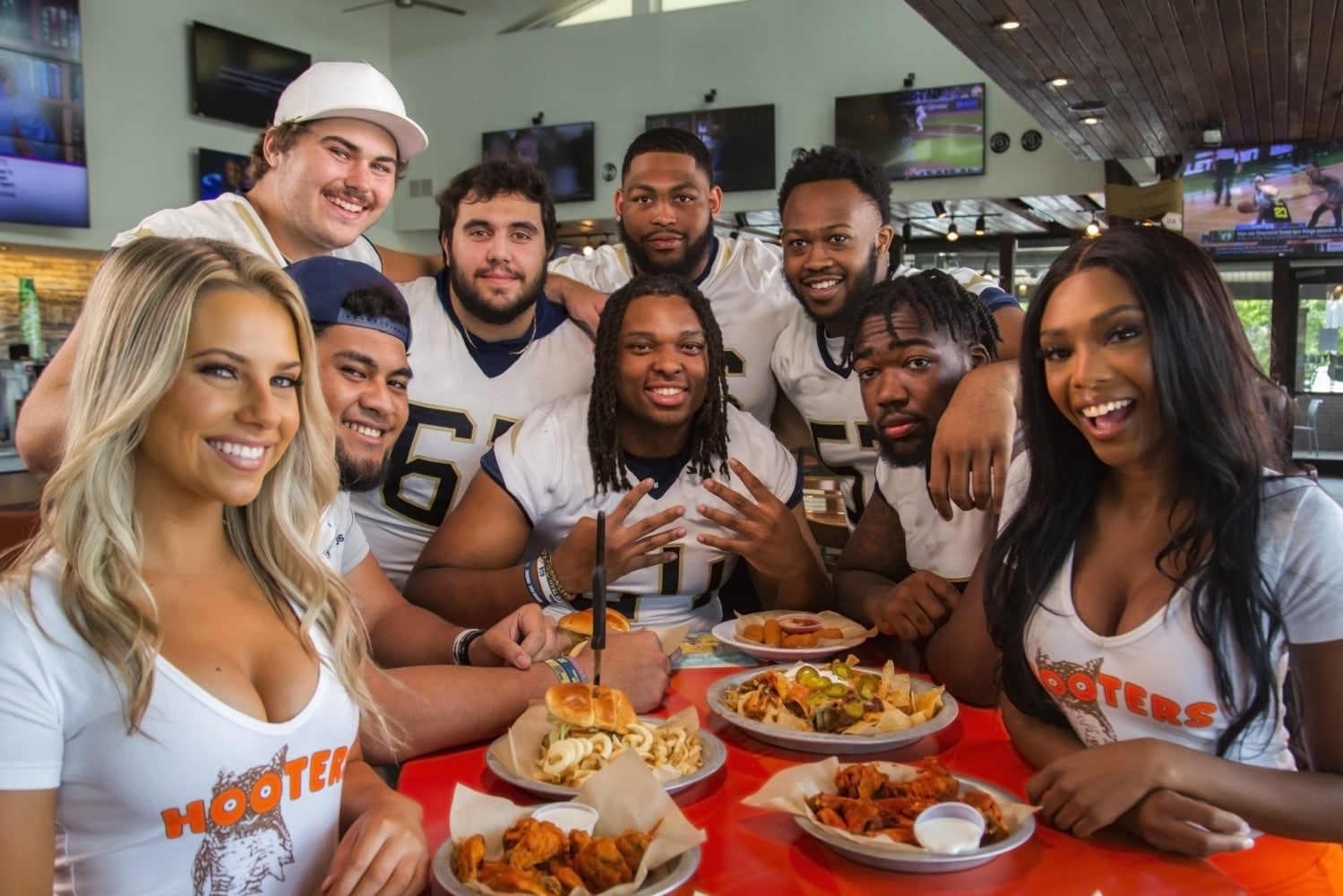Marketing and Branding Strategies

Hooters’ decision to sign 51 college football offensive linemen to NIL deals is a bold move that aims to leverage the growing popularity of college sports and the NIL era. This strategy is designed to enhance the brand’s visibility, attract younger demographics, and ultimately drive sales.
Hooters’ Marketing Strategy
Hooters’ marketing strategy in targeting college football players is rooted in its understanding of the target audience. College football players are young, active, and often social media savvy. By partnering with them, Hooters can reach a large and engaged audience, particularly among younger consumers. This strategy involves several key components:
- Leveraging Athlete Endorsements: Hooters is utilizing the NIL deals to leverage the popularity and influence of college football players. These athletes can promote Hooters through social media posts, appearances at events, and other marketing activities.
- Targeting a Younger Audience: The NIL deals allow Hooters to target a younger audience that may not have been familiar with the brand previously. This is crucial for long-term growth and brand loyalty.
- Building Brand Association: By associating itself with college football, Hooters can build a stronger brand association with sports, youth, and a fun, social atmosphere.
- Generating Buzz and Social Media Engagement: The announcement of the NIL deals has generated significant buzz and social media engagement. This increased visibility can lead to higher brand awareness and ultimately, increased sales.
Potential Benefits and Drawbacks, Hooters signs 51 college football offensive linemen to nil deals
The partnership between Hooters and college football players presents both potential benefits and drawbacks for the restaurant chain:
Benefits
- Increased Brand Awareness: The NIL deals can significantly increase Hooters’ brand awareness among younger demographics, particularly college students and sports fans.
- Enhanced Social Media Presence: Partnering with athletes allows Hooters to leverage their social media influence and reach a wider audience, leading to increased engagement and brand visibility.
- Positive Brand Association: The association with college football can create a positive brand image, associating Hooters with sports, youth, and a fun, social atmosphere.
- Potential Sales Increase: By targeting a younger audience and generating buzz, the NIL deals could lead to an increase in sales and revenue for Hooters.
Drawbacks
- Potential for Negative Publicity: Hooters’ brand image has been criticized for its association with objectification and sexualization. This could lead to negative publicity if the NIL deals are not handled carefully.
- Limited Reach: While the NIL deals target a specific audience, they may not reach a broader demographic, potentially limiting the overall impact on brand awareness and sales.
- Competition: Hooters is not the only restaurant chain using NIL deals to target college athletes. The competition for athletes’ endorsements could be intense, potentially leading to a less effective return on investment.
- Cost: The NIL deals represent a significant investment for Hooters, and the return on investment may not be immediately apparent or substantial enough to justify the expense.
Comparison with Other Restaurant Chains
| Restaurant Chain | NIL Strategy | Target Audience | Potential Benefits | Potential Drawbacks |
|---|---|---|---|---|
| Hooters | Signing 51 college football offensive linemen to NIL deals | College football players and fans | Increased brand awareness, enhanced social media presence, positive brand association, potential sales increase | Potential for negative publicity, limited reach, competition, cost |
| Buffalo Wild Wings | Partnering with college football teams and athletes through sponsorships and promotions | Sports fans and casual diners | Increased brand visibility, association with sports, potential sales increase | Limited reach, potential for negative publicity if associated with controversial teams or athletes |
| Pizza Hut | Offering discounts and promotions to college students through partnerships with universities | College students and young adults | Increased sales, brand loyalty, positive brand association with education | Limited reach, potential for negative publicity if associated with controversial universities |
The Future of NIL Deals in College Athletics: Hooters Signs 51 College Football Offensive Linemen To Nil Deals

The recent surge in Name, Image, and Likeness (NIL) deals in college sports has sparked a wave of change, transforming the landscape of college athletics. This new era presents both exciting opportunities and significant challenges, particularly in college football.
The Impact of NIL Deals on College Football Recruiting
The introduction of NIL deals has fundamentally altered the recruiting landscape, creating a new dynamic between athletes, universities, and sponsors. The potential impact of NIL deals on college football recruiting can be categorized into several key areas:
- Increased Competition: NIL deals have introduced a new form of competition among universities, with institutions vying to offer lucrative deals to attract top talent. This has led to a situation where universities are now competing not only on the field but also in the marketplace.
- Shifting Power Dynamics: The ability of athletes to profit from their name, image, and likeness has shifted the power dynamic in college sports. Athletes now have more leverage in choosing their universities, as they can consider factors beyond traditional athletic opportunities.
- Emergence of NIL Brokerage Firms: The growing complexity of NIL deals has led to the emergence of specialized brokerage firms that help athletes negotiate contracts and maximize their earning potential. These firms play a significant role in facilitating NIL deals and connecting athletes with sponsors.
Ethical Considerations Surrounding NIL Deals
The implementation of NIL deals has raised a number of ethical considerations, prompting discussions about fairness, transparency, and the potential for exploitation.
- Fairness and Equity: Concerns have been raised about the potential for disparities in NIL opportunities among athletes from different backgrounds and universities. For example, athletes from larger universities or those playing in more popular sports may have greater access to lucrative deals than those from smaller institutions or less popular sports.
- Transparency and Disclosure: The lack of clear guidelines and regulations surrounding NIL deals has led to concerns about transparency and disclosure. There is a need for standardized practices to ensure that NIL agreements are fair and transparent for all parties involved.
- Potential for Exploitation: There are concerns that some athletes, particularly those from disadvantaged backgrounds, may be vulnerable to exploitation by sponsors or agents who may seek to take advantage of their desire to profit from their NIL. This underscores the importance of establishing strong ethical frameworks and safeguards to protect athletes’ interests.
The Future Landscape of NIL Deals in College Sports
The landscape of NIL deals in college sports is still evolving, with new developments and challenges emerging regularly. However, some key trends are likely to shape the future of NIL deals:
- Increased Regulation: The NCAA and individual state governments are expected to continue developing regulations and guidelines to address the complexities of NIL deals. These regulations are likely to focus on issues such as disclosure, transparency, and the prevention of undue influence by sponsors.
- Integration of NIL into Athletic Programs: Universities are increasingly incorporating NIL opportunities into their athletic programs, providing athletes with resources and support for maximizing their NIL earnings. This includes establishing dedicated NIL offices, providing training on brand building and marketing, and facilitating connections with sponsors.
- Emphasis on Collective Bargaining: There is a growing movement among athletes to advocate for collective bargaining rights, which could lead to the establishment of athlete unions or associations. This could significantly impact the future of NIL deals, as athletes would have greater power to negotiate their rights and benefits.
Hooters signs 51 college football offensive linemen to nil deals – Hooters’ recent signing of 51 college football offensive linemen to NIL deals is a bold move, showing their commitment to supporting the sport. While some might see it as an unconventional strategy, it’s certainly generating buzz. Perhaps this new marketing approach is as unexpected as the trend of pink camo chairs at Walmart , which has also taken the internet by storm.
Either way, Hooters is definitely making a name for themselves in the world of college football.
Hooters’ recent move to sign 51 college football offensive linemen to NIL deals has sparked a lot of conversation about the evolving landscape of college sports. It’s interesting to compare this to the WNBA Aces sponsorship investigation , which raises questions about the transparency and fairness of sponsorship deals in professional sports.
Both situations highlight the need for clear guidelines and regulations to ensure that athletes are fairly compensated and that the integrity of the game is maintained.